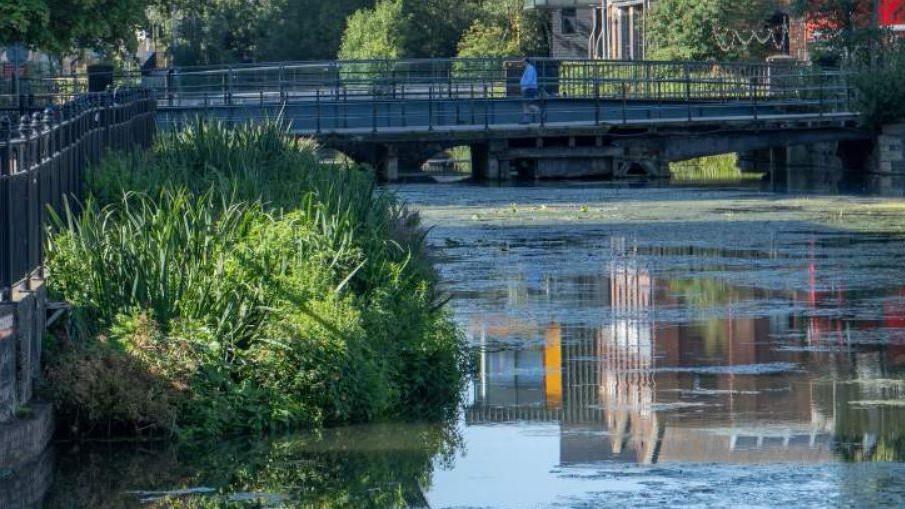City's first floating wildlife habitat launched
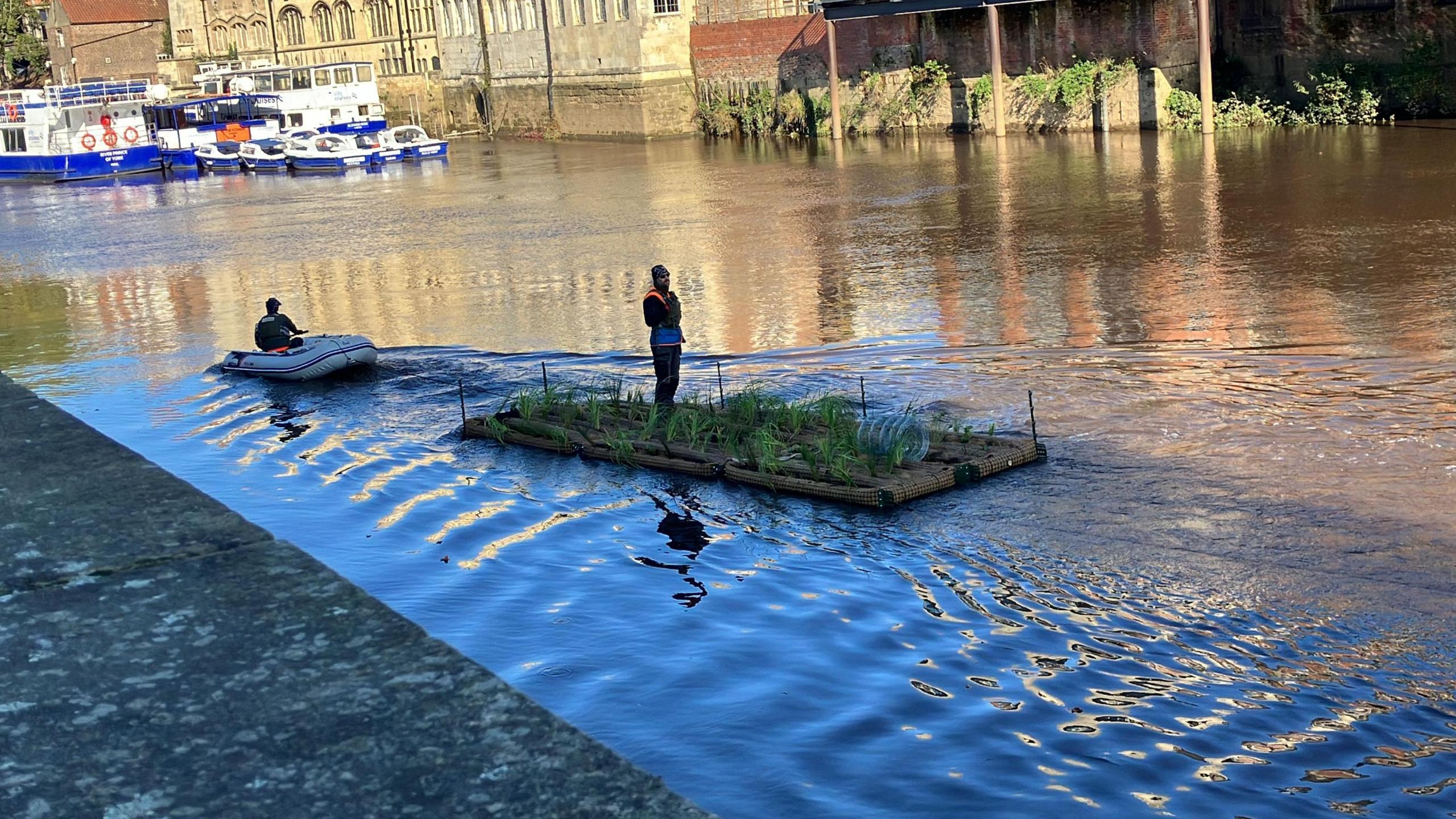
The second half of the 54ft (16.5m) by 7.5ft (2.3m) structure was floated into position
- Published
York’s first “floating ecosystem” has been launched on the River Ouse to create a thriving habitat for wildlife and help improve water quality.
The project to install the pontoon-like structure has been led by charities St Nicks and York Cares
Jonathan Dent from St Nicks said: “This is an amazing project to inject some life back into the water in the city centre of York where there pretty much is none.”
Funded by insurance company Aviva, the structure has been attached to the river wall near to North Street Gardens with floats which allow it to rise and fall with the river levels.
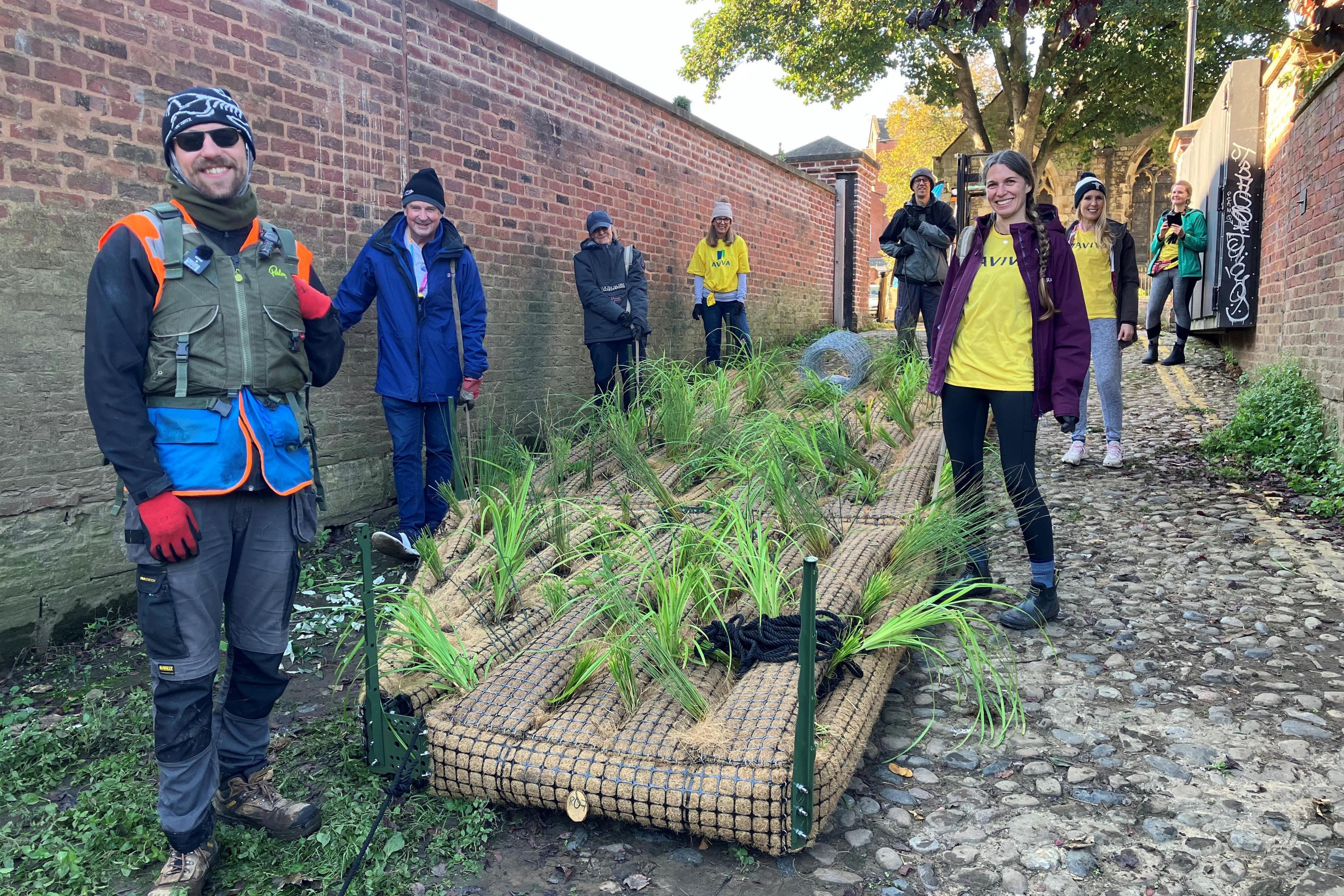
Volunteers helped add plants to the floating island
Designed by Scottish firm Biomatrix, the floating island hosts between 20 and 30 different plant species which are able to provide a shelter for small mammals.
St Nicks said it is hoped the 54ft (16.5m) by 7.5ft (2.3m) natural haven will attract pollinators and help support wildlife including nesting birds and provide shade under water and become a feeding ground for fish.
Mr Dent said there have been many years of urbanisation and the project was about "creating something that's going to go back into the water that will attract wildlife and different insects that will improve the water quality and will look real nice for people as well".
He said it was the culmination of months of "planning and hard work" by organisations in the city "to help restore ecological function on our rivers, which means the local community can experience and enjoy wildlife on their doorsteps for generations to come".
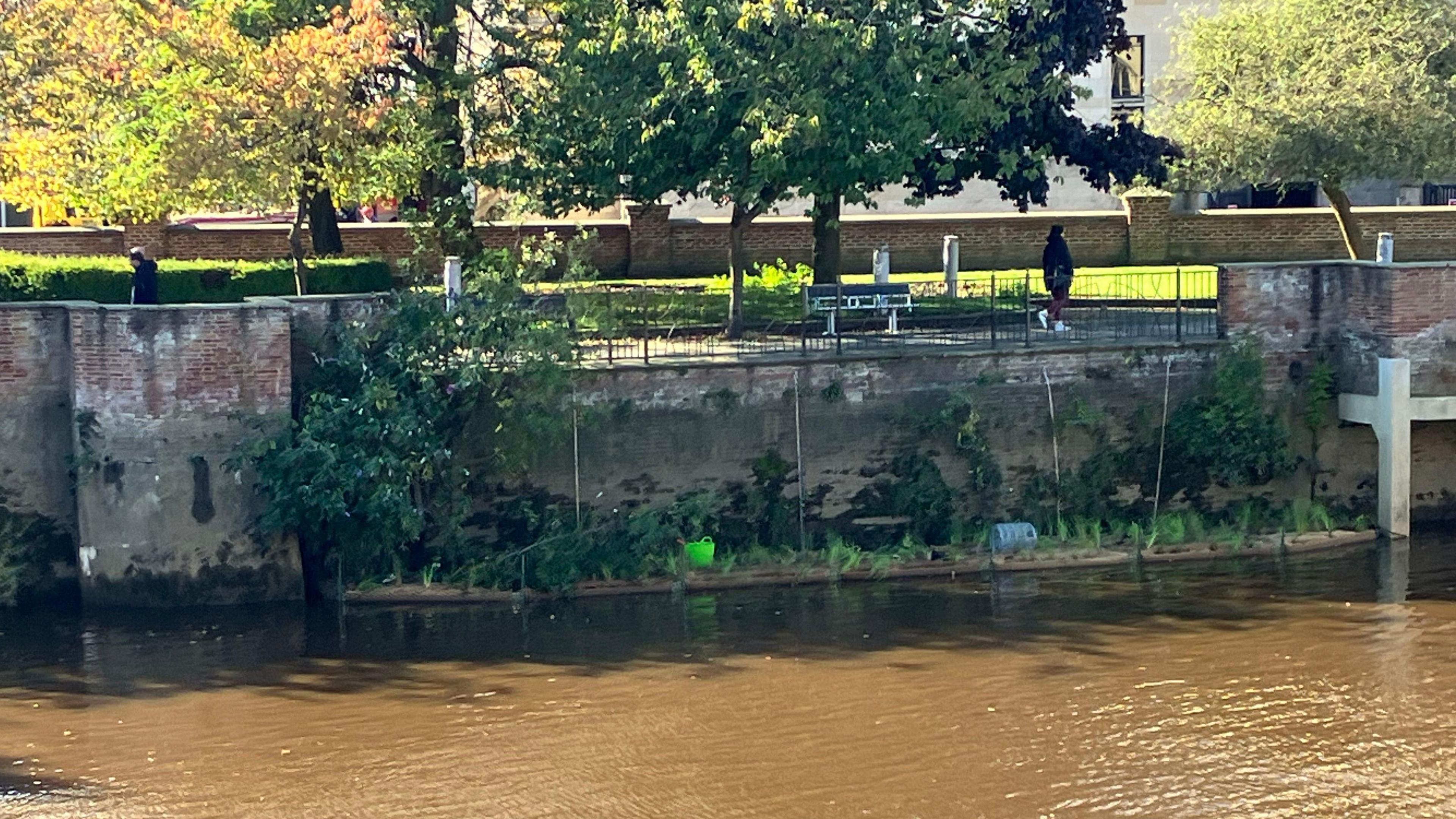
The new wildlife habitat is finally installed
Ellen Hebdon from Biometrics Water Solutions said all the plants on the structure are native aquatic species.
"It will bring that green amenity to the environment, it will make the edge of the river look more natural.
"It's just really bringing back that habitat and everything above and below the water that we've destroyed over the years."
The structure, which is made up of recycled, non-toxic materials must be kept litter-free in line with the planning permission granted by City of York Council.
Listen to highlights from North Yorkshire on BBC Sounds, catch up with the latest episode of Look North or tell us a story you think we should be covering here, external.
- Published25 September 2024
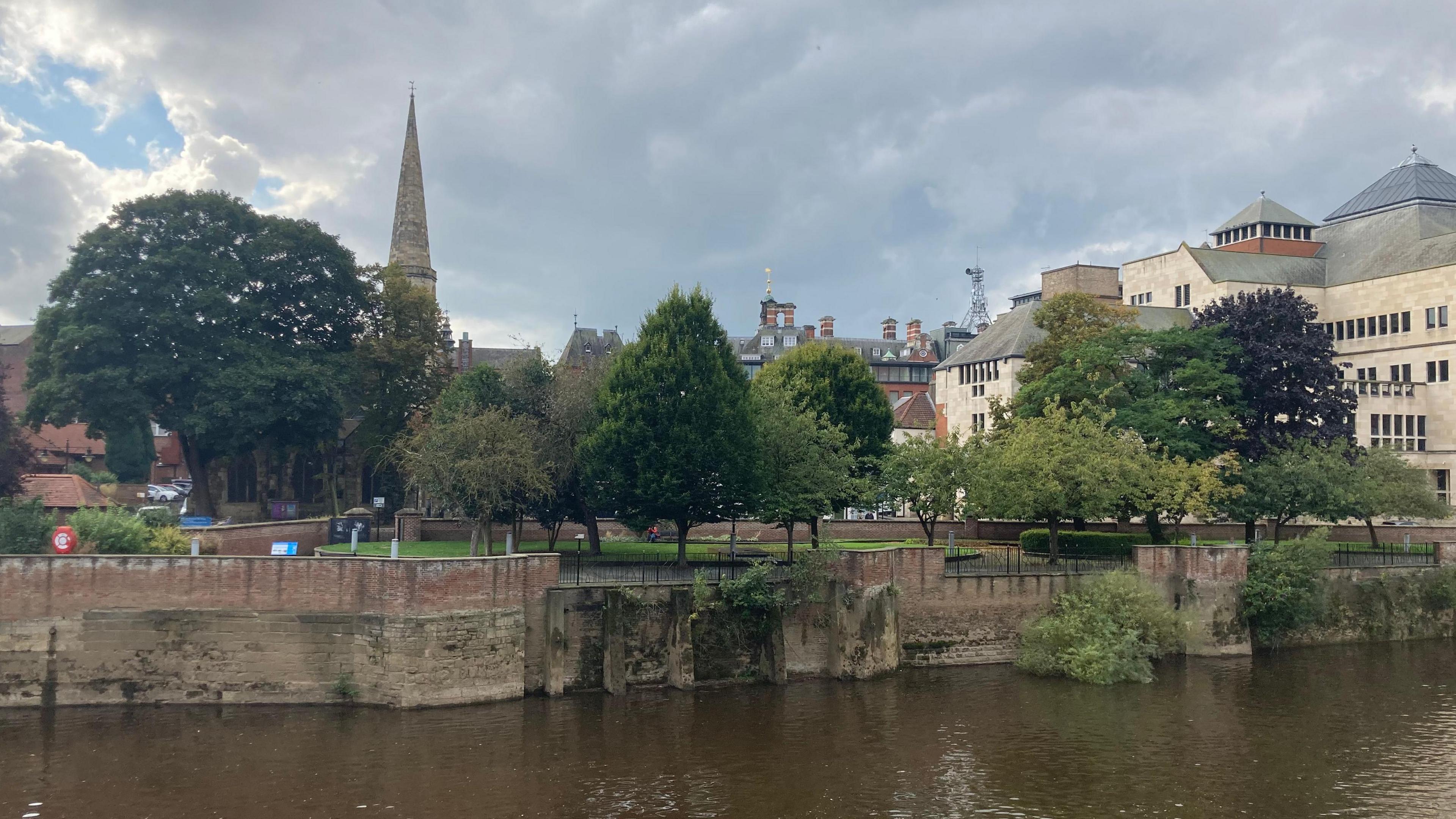
- Published8 August 2024
